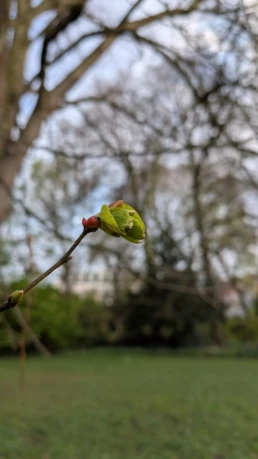Just Before Your Next One, Read This
Next Time!
Next time you have the urge to smoke some weed, joints, tobacco… stop for ten seconds. Breathe, for ten seconds. Might you be numbing your pain by smoking it away?
My Story with Smoking
When I first started smoking joints, I told myself I was just doing it because it helped me sleep. Just a few puffs before bed, every night. And every night it was, for such a long, long time… What began as a few puffs started becoming a habit, and what became a habit started causing anxiety. I was lying in bed for hours with racing thoughts, fast breath, and sleepless nights. Yet, I still did it.
What Was Going On?
Reflecting on that period in my life, I realized that I was simply unhappy. I was surviving in living rather than living from a place of strength, love, and presence. Although I was surrounded by a loving relationship, I was still not satisfied with who I was, my own history, and what I thought of myself.
So, What Was I Doing?
I was literally numbing whatever was going on inside of me. I pretended that everything was fine, but in fact, I had a lot of shadow work waiting on a list. And the only way I could hold it off was by numbing it. I tried to smoke it away. And that was no fun. At a certain point, my body stopped accepting it: the anxiety, the smell intolerance, the coughing…
Numbing pain with smoking and where to begin?
What worked for me was finding out the reason why I smoked. And when I realized the reason, I committed to myself to start working on it. Whether through self-learning, journaling, books, coaching, or therapy, I did the work. And the work isn’t fun. It’s tough work. And I also realized how important this work is for my own happiness and wellbeing and for those around me.
Just Before Your Next One, Read This
Next time you have the urge for some “fun” or some “relax chill time,” please just check your intention. Is there hidden pain there that needs your attention? Might there be something inside you asking for attention? Maybe it’s time for you to have a look, no matter what the price is.
One glance at a time. One step at a time. At your own pace.
Enjoy my other reads:
Stop Blaming Your Parents: Turning Mindfulness into Self‑Responsibility. On this link.
Living in Peace: How to Find Inner Peace in this World? On this link.
How to Transform Self-Sabotage with Mindfulness and Love? On this link.
Emotional Identity and Pain: Who Are You Without the Struggle? On this link.
External Resources:
Zen & Engaged Buddhism:
War Begins Again When Those Left Behind Try to Live
A Brief History
I was born in 1988, during the brutal final stretch of the Lebanese Civil War — a war that raged from 1975 to 1990. Those last years were chaos: factions fighting for power, influence, and survival, while ordinary people tried to cling to life.
Away from the politics and headlines, a child was born that year — nameless for months until my late aunt gave me my name: Ashraf.
War Begins Again When Those Left Behind Try to Live
As a child, I never understood why I felt so anxious, restless, and disconnected. Wherever I was, I wanted to go home. To feel safe. I couldn’t explain it, and no one — not even my parents — could see it.
I remember feeling trapped inside my own skin, wanting to crawl out of my shoes, my clothes, my body, to escape that unnamed tension humming inside me. I didn’t know it then, but that was my first inheritance from the war.
My Mother’s Fear, My Fear – Born in War
That fear wasn’t just mine — it was hers.
When she was pregnant with me, bombs were falling on our village. She and my family fled into a bunker, carrying that terror in their bodies. She used to say, “That was the norm back then.” But trauma doesn’t disappear just because we normalize it. It buries itself deep.
And I carried it with me, even before I was born. That constant hypervigilance — that readiness to run, to hide, to never fully rest — became my quiet companion.
Growing Up in the Shadow
In school, I was bullied for years. I didn’t understand why it had to be me, or why I kept it to myself, never telling my parents. Something in me couldn’t connect, couldn’t interact, couldn’t live the life I quietly fantasized about.
Until I was eighteen, I felt like I was always on the run — under attack, unsafe, unprotected, and always alert to flee. That feeling shaped me in ways I still uncover.
War, Again
In 2006, war found me again. Israel’s assault on Lebanon didn’t just shake the ground around me — it shook something deep inside me, something that had been waiting since birth.
Living through that second war carved new layers onto old wounds. It taught me how deeply war embeds itself in the body and how long it lingers after the bombs stop falling.
The Cost of War
I share this reflection now, as wars erupt across the world, to remind us: every war scars generations.
When we support war — actively or silently — we do more than destroy lives in the present. We strip ourselves of our humanity and forgo our kindness, empathy, integrity, and peace and all our values, not just from others, but from ourselves.
We hand that suffering to our children, and they to theirs. And those we’ve inflicted violence on? They carry it forward too. This is how war sustains itself — a vicious cycle of trauma and retribution passed down, generation to generation.
A Call to Reflect
I think of the children of Ukraine. The children of Palestine.
What are the chances they will grow up without anger, without hatred, without a desire for revenge? What are the chances that this cycle won’t repeat, fed by our silence, our support, our detachment?
My story is just one thread in this tapestry.
I leave you with this to reflect:
War doesn’t end when the bombs stop. It begins again when those left behind try to live.
Enjoy my other reads:
Recover Your Sovereignty: On this link.
Stop Blaming Your Parents: Turning Mindfulness into Self‑Responsibility. On this link.
Living in Peace: How to Find Inner Peace in this World? On this link.
How to Transform Self-Sabotage with Mindfulness and Love? On this link.
Emotional Identity and Pain: Who Are You Without the Struggle? On this link.
External Resources:
Zen & Engaged Buddhism:
Without Our Triggers, Our Growth is Hindered
Mindfulness of our Triggers Help us Grow
For many years, I thought avoiding certain people was a sign of growth — less triggered, less agitated, less angry. But in reality, I was only avoiding what was already present inside me. I was burying it as deep as possible in my consciousness, convincing myself that if I didn’t look at it, it didn’t exist. As I brought mindfulness into my triggers and the benefit I got from being triggers, my perspective changes.
Not being Triggered was Great!
I enjoyed not being triggered because I didn’t have to face my negative emotions — my frustration and anger from my teenage years, my fear of abandonment from childhood, my deep need to control everything to feel safe, a need shaped by being born into and witnessing war in Beirut.
For a long time, it felt like these experiences didn’t exist anymore. I told myself I was fine — life was fine. But deep inside, I was unhappy. Something was missing.
Progress v/s Hindrance
What I thought was progress in my personal development was really just a lens I wore — an illusion that required little effort and brought no real transformation. Looking back, those were not forward steps but backward ones, keeping me further away from the work of truly knowing myself, my experiences, their impact, and how all of it shaped the human being I am today.
Years later, I was lucky enough to meet my ex-partner — someone who held up a mirror to me. That relationship became an invitation to grow, to reflect, to question.
Gabor Maté teaches that relationships are meant to trigger us — not to harm us, but to reveal our patterns and pain. Looking back, I feel grateful. That relationship helped me break down the walls I had built and begin to release the compartmentalization of my feelings.
Understanding Triggers with Mindfulness
Triggers, especially those brought by other people, are invitations to self-reflect.
Instead of reacting, we can pause and become curious:
“Interesting that I had this reaction to their behavior. What is being triggered in me?”
“What past experience does this feeling remind me of?”
For me, a trigger is a reaction that feels disproportionate to the situation — like my response has a deeper story behind it.
For example, I might have a political opinion, but when triggered, my opinion becomes much more intense. That intensity is a cue for me to ask myself:
“Where does this intensity come from?”
“What feelings are fueling it?”
“What old experiences are being replayed in this moment?”
Facing What We Bury
Triggers are all around us. Ignoring them doesn’t make them disappear — it only buries them deeper, where they can grow toxic and chronic.
When we learn to embrace our triggers with curiosity, we create an opening. That opening lets us grow, heal, and move toward a more peaceful mind and body.
It’s not easy work. But it’s the work that brings us home to ourselves.
Enjoy my other reads:
Recover Your Sovereignty: On this link.
Stop Blaming Your Parents: Turning Mindfulness into Self‑Responsibility. On this link.
Living in Peace: How to Find Inner Peace in this World? On this link.
How to Transform Self-Sabotage with Mindfulness and Love? On this link.
Emotional Identity and Pain: Who Are You Without the Struggle? On this link.
External Resources:
Zen & Engaged Buddhism:
Anxious-Preoccupied Attachment and My Experience With It
Discovering Anxious-Preoccupied Attachment and My Experience With It
Growing up, I never thought I was witnessing what’s called “anxious-preoccupied attachment” — a pattern that often shows up as protest or pursuer behaviors. I just felt that my parent wanted the best for me — that they were a bit too pushy, a bit too worried, a bit too anxious that I wouldn’t make it in life. It came from love — genuine love — but it had its consequences.
My approach to life was shaped by this environment. I felt I needed to perform — to outperform — to compete. I had to try to be the first in class, and when I wasn’t — which was often — I felt like my efforts, or even I as a child, weren’t fully appreciated.
Gratitude to my Parents
As I write this, I’m also aware that these experiences are part of my present moment — part of who I am today. And I can cherish this moment. I can feel gratitude for my parents, and for everything that led me here. That gratitude doesn’t stop me from learning about myself, or from releasing what no longer serves me.
A Life Journey
As a teenager, I rebelled against the constant push to perform. Eventually, I realized that if I wanted to reach my own goals, I needed to at least maintain passing grades. The anxious-preoccupied attachment I grew up with showed up as constant connection-seeking — an urge for me to study more, to check if I was reading enough, doing my homework — and a great deal of negative talk, passive aggression, and shame when I fell short.
Over the years, I came to understand that passive aggression and shaming often grow from fear-driven attempts to motivate or keep connection alive. The constant monitoring? That was intolerance of uncertainty — the unknown feeling dangerous. The nagging tone? Hypervigilance that hadn’t found a regulated outlet.
Understanding this shifted my perspective: so much of what felt controlling and emotionally unsafe to me was actually anxiety speaking through their behavior.
With that understanding came a moment of insight: “Yes, of course!” Knowing how my parent lived, I could see their own need for safety, for reassurance, for connection — and for acknowledgment that they, too, mattered. It made sense.
But insight alone didn’t erase the residue those years left in me.
How It Shaped Me
All that externalized anxious attachment turned inward. It showed up as:
Negative self-talk.
A constant need to do the right thing — and perfectly.
Pressure to paddle against the wave, even at the cost of losing relationships.
Anxiety around decisions and the future.
A drive to stay busy, productive, always achieving.
At times, demanding too much from people — colleagues, friends, even loved ones.
How I Deal With It
Mindfulness has become the key to understanding and softening these patterns.
Mindfulness of thoughts, feelings, and body: Not hyper-vigilance, but gentle noticing. Catching when a thought loop or physical tension signals that the pattern is rising.
Checking in: Asking myself, “How am I feeling right now?” Often, the answer is a mirror showing me what’s really going on in the background.
Boundaries with kindness: Setting boundaries softly but firmly — with compassion for others (because they, too, are suffering) and compassion for myself (because I no longer want to suffer from their suffering).
Mindfulness hasn’t erased these patterns overnight, but it has helped me see them clearly, hold them gently, and begin to let them go.
That, for me, is where healing — and freedom — truly begins.
Anxious-preoccupied attachment isn’t a clinical diagnosis — it’s a lens through which many therapists and researchers describe a pattern of relating marked by deep fear of abandonment, reassurance-seeking, and low self-worth. It helped me make sense of my experience.
Enjoy my other reads:
Recover Your Sovereignty: On this link.
Stop Blaming Your Parents: Turning Mindfulness into Self‑Responsibility. On this link.
Living in Peace: How to Find Inner Peace in this World? On this link.
How to Transform Self-Sabotage with Mindfulness and Love? On this link.
Emotional Identity and Pain: Who Are You Without the Struggle? On this link.
External Resources:
Zen & Engaged Buddhism:
Self-Love – The Way to True Love
From “Treat-Yourself” Culture to Realization
For over a decade, I was taught to believe self-love meant self-indulgence. Take that vacation, go on that trip, crave an ice cream—you deserve it after this tough day. Spending a weekend on my favourite video game felt normal. Yet none of it made me happier, lighter, or helped me break down the patterns I kept repeating.
What Media Misses About Self-Love
It turns out this version of self-love was sold to me by mainstream media, social media, articles, and well-meaning people. What truly matters became harder to find. Years ago, I was lucky enough to learn from Thich Nhat Hanh, whose teachings explore the essence of self-love and true love. More recently, I attended a retreat at the European Institute of Applied Buddhism (EIAB) in Germany led by Thầy Pháp An. The theme was Teachings on Love.
Facing Pain: The Essence of True Self-Love
Self-love—both complex and simple—is finding the most painful parts of ourselves and bringing love to them. So I sat with my pain, with the patterns of suffering inside me, and I brought light to them; I gave them attention and offered love. They are part of me—how could I neglect them for years while thinking ice cream was the answer?
Authenticity Through Gentle Self-Honesty
When I start being truly honest about my pain—seeing its intensity and gently bringing love to it—I can show my real self to the world. Without shame. Without blame. From that place of freedom, authenticity becomes possible. I meet the world with vulnerability that feels solid, strong, and loving, rather than weak.
Healing the Inner Child (Thich Nhat Hanh’s Guidance)
Through Thich Nhat Hanh’s teachings I also learned how to heal my inner child. His book Reconciliation: Healing the Inner Child is a step-by-step guide to sit with that child, attend to the pain, and illuminate the darkest places.
Balancing Comfort Treats with Mindful Compassion
It isn’t always easy. Sometimes that ice cream feels easier than mindfulness—and that’s okay. Balancing small treats (my favourite) with compassion toward our deepest wounds keeps us authentically on the path of healing.
Loving from Strength: The Ripple Effect
When we stay on that path, we open to the world with love, joy, and happiness. We love from strength, not need; with intention, not longing. Our love becomes true at its core because it begins with unselfish love toward ourselves—and naturally extends to others.
Enjoy my other reads:
Recover Your Sovereignty: On this link.
Stop Blaming Your Parents: Turning Mindfulness into Self‑Responsibility. On this link.
Living in Peace: How to Find Inner Peace in this World? On this link.
How to Transform Self-Sabotage with Mindfulness and Love? On this link.
Emotional Identity and Pain: Who Are You Without the Struggle? On this link.
External Resources:
Zen & Engaged Buddhism:
Stop Blaming Your Parents: Turning Mindfulness into Self‑Responsibility
Blame Is a Scapegoat
For many years, I wished I had different parents from the ones I was born to. As a child, I imagined what life would be like with other parents—how I would behave, how I would be treated, what they could afford for me. I even pictured a home without arguments or disagreements.
That day‑dreaming followed me into my teenage years, but by then it carried anger and hatred toward both of them, each in different ways. I avoided contact and cocooned myself in a private world: a world of day‑dreams—of them being different people and of an alternate reality for myself—because the one I had felt too painful to fully experience (perhaps that warrants a dedicated post).
As time passed, my feelings evolved. I blamed them for everything: our poverty, the things we couldn’t afford, having to work full‑time to pay for university, even that my siblings had to help with tuition fees. Until about eight years ago, I blamed my parents for every misfortune I encountered, without taking any responsibility whatsoever.
Yet they could only love me.
With the little they had, they provided a home and an education through high school. They tried, with the best of intentions, to raise me, love me, and show me their way of life.
From Blame to Mindfulness
When I began my life‑changing journey of mindfulness, I touched an immense inner space I had never experienced before. That space called me back to my roots—my parents—where everything begins. It invited me to revisit them, rewire my day‑dreams, rescript my experience, and return to the child, teenager, and young adult who held so many feelings, thoughts, and anxieties—and to bring love to each of them.
I was invited to become curious about my lifelong patterns—the behaviors, thoughts, and situations I kept recreating, which carried the same pain and suffering I had known as a child.
These patterns were hindering my happiness.
I was acting out a textbook version of self‑sabotage.
I’m share my experience to say:
-
You are not alone in this.
-
You do not have to do it alone.
From Mindfulness to Responsibility
Mindfulness helped me become aware of my feelings, emotions, thoughts, and patterns—and what I need to do (and still need to do) to find happiness. Yet mindfulness alone is not enough. Other resources have helped me as well: systemic therapy, life coaching, books, and mindfulness practice together.
Use every resource at your disposal to release blame toward your parents and the unhappiness that follows. Owning our experience empowers us to act and tap into the inner wisdom we all possess—if we allow ourselves to listen.
Check out my other blogs and external links:
How to Transform Self-Sabotage with Mindfulness and Love? On this link.
Why We Mend Our Wounds, Not Heal Them (Yet)? On this link.
Is Awareness the Same as Freedom? On this link.
Feeling Overwhelmed by Personal Growth? On this link.
Learn more about healing your inner child On this link.
External Resources:
Zen & Engaged Buddhism:
How to Transform Self-Sabotage with Mindfulness and Love
How Do We Transform Our Self-Sabotage?
We carry an inherent wisdom within us. Deep down, we know what’s best for us. We often know exactly what we must do to achieve what we want in life. Sometimes, we even know the path—and the means to walk it.
Yet somehow, we still don’t take the first step.
So… how do we transform our self-sabotage?
Self-Sabotage Is a Trickster
Let’s be clear: I don’t believe self-sabotage is some external force we can blame for everything—just like some people tend to externalize the ego.
Self-sabotage is part of us.
And unless we shine a light on our behaviors, it remains a shadow—hindering our happiness, freedom, or whatever it is we seek.
It shifts shapes and forms.
It adapts.
Your self-sabotage might look one way at work… another with your parents… and yet another in your relationship.
But at its core, what does self-sabotage need most to transform?
Self-Sabotage Needs Love
Have you ever noticed how most things in life—especially mental health—begin to soften when met with real, unconditional love?
There’s a saying from where I come from:
“Even rocks can cry.”
(Rocks are as alive as we are—but that’s for another day.)
The point is: anything in us that resists our true knowing, anything that works against our all-knowing nature, is a part of us that is lacking love.
Why is it lacking love?
>Because it was never given any.
>it wasn’t accepted or embraced.
>Because we never saw it as fully ours.
But when you bring love—genuine, ultimate, infinite love—to even your darkest corners… they begin to shift.
They soften.
They transform.
Mindfulness Transforms Self-Sabotage
Mindfulness is the key.
Bringing awareness to your behavior—and reflecting on it with compassion—can help you see the ways in which you hold yourself back.
Whether it’s blocking your own joy, delaying liberation, or avoiding completing a simple task…
There’s often something deeper beneath it.
Many past experiences plant the seeds of self-sabotage:
“I’m not good enough.”
“I don’t deserve this.”
“This is too good for me.”
“This is too bad for me.”
Where do those thoughts come from?
And how can you bring love to the moment in your life when they were formed?
Was it the little you?
The child you?
The teenager?
The young adult?
Maybe… the present you?
Mindfulness and self-reflection—when practiced with love and kindness—can reprogram your inner world.
You shift your self-talk.
You rewrite the script.
And with time, you begin to see your life in a brighter, softer light.
I wish you lightness.
I wish you joy.
And I wish you happiness.
Other Reads:
Why We Mend Our Wounds, Not Heal Them (Yet)? On this link.
Is Awareness the Same as Freedom? On this link.
Feeling Overwhelmed by Personal Growth? On this link.
Learn more about healing your inner child On this link.
External Resources:
Zen & Engaged Buddhism:
Why We Mend Our Wounds, Not Heal Them (Yet)
Why We Mend Our Emotional Wounds (Before We Heal Them)
Over the years, I was under the impression—through what I heard, learned, and hoped—that eventually I would heal from my traumas. That one day, I’d be free from the emotional weight of the experiences that shaped me, especially the difficult ones: Mending emotional wounds.
But lately, something has shifted in my understanding.
I’m realizing I haven’t exactly healed…
What I’ve done is mend.
I’ve tended to the wounds—not erased them.
Healing, I now see, isn’t about forgetting what happened or suddenly feeling "fixed." It's not like a headache you treat with a pill and then forget it existed. Emotional wounds, especially the ones we carry from early life, go deeper than that.
Mending Emotional Wounds: A Practice of Returning to Ourselves
Some wounds go so deep, they become part of how we see the world—and ourselves. And while we can learn to soothe them, care for them, and understand where they come from, they may reopen. Sometimes at the smallest trigger. Sometimes when we least expect it.
Mending doesn’t mean the pain is gone forever. It means we are learning how to tend to the pain with more care, more awareness, and more compassion than we did before.
Over time, these wounds may scar. And those scars can be gentle reminders of where we’ve been—and how far we’ve come.
And maybe—just maybe—within this lifetime, some of those wounds will heal. Maybe the scar fades. Maybe it doesn’t. But we move forward anyway.
Healing Isn’t Instant—and It Isn’t Linear
I want to avoid misguidance.
There is no quick fix.
We don’t “heal” overnight—or even after one coaching journey, therapy session, or moment of clarity.
True healing begins with this simple and powerful truth:
Acknowledging the wound is the beginning—not the end.
It starts with awareness—realizing there’s something within us that still aches.
That ache might show up in our relationships, our work, our sense of self, or how we treat the ones we love.
From there, we begin to ask:
How do I stop the bleeding?
Where did it come from?
And slowly, gently, we begin to apply pressure. We start caring for what hurts. We begin mending.
Sometimes, the wound opens again.
Sometimes, it doesn’t.
But with intention and honesty, we begin to grow from it.
Healing Is the Final Stage—Not the First
Healing isn’t the first step.
It is the result of years of tending.
And in many ways, it might take a lifetime.
But every time we sit with our wounds instead of running from them…
Every time we hold space for what hurts instead of numbing it…
Every time we meet ourselves with compassion instead of shame…
We take a step closer.
You don’t have to be fully healed to live a meaningful life.
But by mending your wounds with care and presence—you might find that you are living more fully than ever before.
Other Reads:
Is Awareness the Same as Freedom this link.
Feeling Overwhelmed by Personal Growth? on this link.
Learn more about healing your inner child on this link.
External Resources:
Zen & Engaged Buddhism:
Is Awareness the Same as Freedom?
Awareness and freedom
Becoming aware isn’t the same as becoming free.
After years of reflecting on mindfulness, I’ve come to question something we often assume: that awareness automatically leads to freedom.
But… does it?
If awareness is the key, what exactly are we becoming aware of?
And if freedom is the outcome, what are we being freed from?
These aren’t just abstract ideas for me—they’ve been real, lived questions.
And over time, I’ve started to see that awareness is not some detached state.
It is always awareness of something.
This insight is one I’ve learned through the teachings of Thich Nhat Hanh and the Plum Village tradition of Buddhism—a path (Buddhism) I’ve been walking for over a decade. And it has stayed with me:
Awareness is always awareness of something.
So it follows:
Freedom is always freedom from something.
What do you want to become aware of and free from?
For me, it was the long-standing impact of being bullied.
If you’ve read the About Me section, you know this experience shaped much of my early self-image. Over the years, I developed defense mechanisms to protect myself—mechanisms that, at some point, stopped serving me.
When I began to look deeply, I could see how this past was still present: in my thoughts, my relationships, and my patterns.
And that’s where awareness became something more than observation—it became a doorway.
A doorway to understanding.
To healing.
To freedom.
What do you want to be free from?
I want to be free from the unconscious protections that were once necessary but are no longer true to who I am today.
I want to live a lighter life.
One not defined by the past, but informed by it.
A life that doesn’t project old wounds onto people I love.
Because by freeing myself…
I free others too.
A question for you:
What is it that you want to become aware of?
What do you want to be free from?
Not in a grand, life-changing way.
But maybe just in this moment, right now.
Bring a little compassion to it.
Let the answers come when they’re ready.
Other Reads:
Here’s more about mindfulness on this link.
Learn more about healing your inner child on this link.
External Resources:
Zen & Engaged Buddhism:
Feeling Overwhelmed by Personal Growth? Here’s What Helped Me
Feeling Overwhelmed by Personal Growth?
The feeling of being overwhelmed by personal growth is common. I’ve experienced it myself—the internal questions like:
“When will I stop feeling like this?”
“When will I finally get better?”
“I’m 36 and I still can’t get a grip on my thoughts when they take over.”
That inner urgency to feel better, especially in darker moments, can be counterproductive. It can make us feel more broken, more behind, more stuck. But there’s something that’s helped me...
The Wisdom of Impermanence
Over 3,000 years ago, a wise teacher said: “Everything is impermanent.”
That includes our thoughts, our emotions, our anxiety—and even our very sense of self as we know it. This simple but profound truth has helped me become a little gentler with myself.
It reminds me that my feelings, no matter how overwhelming, are part of a passing moment. They are real—but they are not permanent.
Being with What Is
Knowing this doesn’t make intense feelings go away. It doesn’t make intrusive thoughts less persistent. But it has changed how I relate to them.
When I’m anxious and overwhelmed, I ask myself: What good will it do to resist what’s already here? To fight the anxiety with more tension? Or to distract myself until I can’t feel anything at all?
Instead, I try to stay present. To acknowledge what’s here with as much gentleness as I can. I try not to flee, but to embrace the moment—because that’s how love and healing begin.
Let It Rain
If it rains, let it rain. Pain can bring growth. From the rainfall, buds eventually sprout. And from pain, wisdom can emerge.
This isn’t about glorifying suffering—it’s about trusting that something meaningful can arise when we allow space for what’s truly present.
You already have the answers. The path is within you. What you need most is space, trust, and patience to hear it.
What Helps Me—and Might Help You
Next time you’re in a low moment, try this:
- Sit with your feelings. Let them be exactly as they are.
- Remind yourself: there’s nothing wrong with you.
- Take time off if you need to—cancel the plans, step back from work, create quiet.
- Avoid big decisions. Let clarity come naturally, not under pressure.
- Create a small, gentle routine: for me, it’s washing my face, brushing my teeth, doing yoga (10–45 minutes), and drinking warm water in the morning.
- Journal. It helps me reflect, understand, and check in with what’s really going on.
- After a few days—open the curtains. Let the sun in. Others in. Let yourself come back.
Sometimes the insight comes during the cocooning. Sometimes, it comes after. Either way, it always comes.
Final Thoughts
You are not alone in this. If you're feeling overwhelmed by your personal growth journey, know that it's okay to pause. It's okay to feel. And it’s more than okay to give yourself grace.
You are growing—even when it doesn’t feel like it. Especially then.
Other Reads:
Learn more about my offerings on this link.
Here’s more about mindfulness on this link.
Learn more about healing your inner child on this link.
External Resources:
Zen & Engaged Buddhism:









